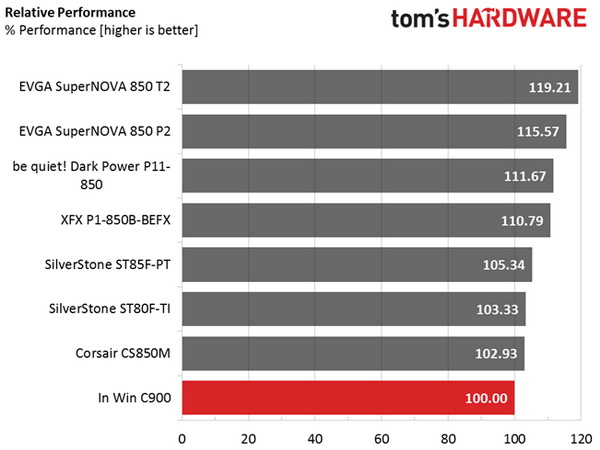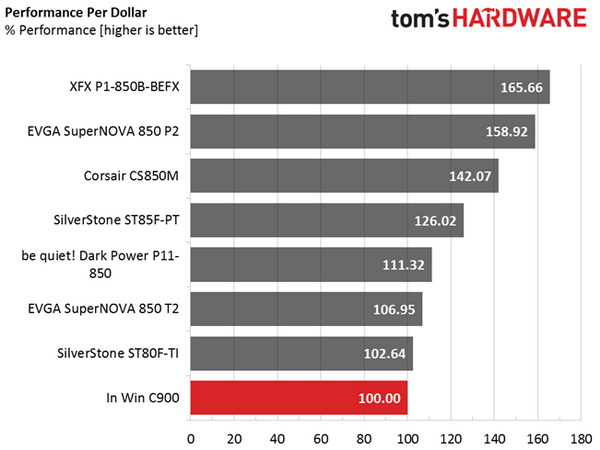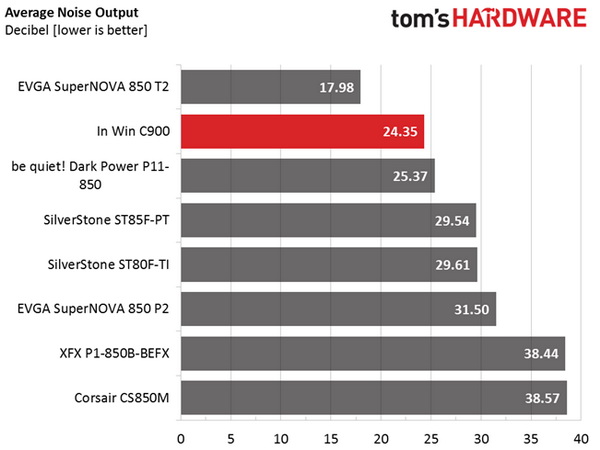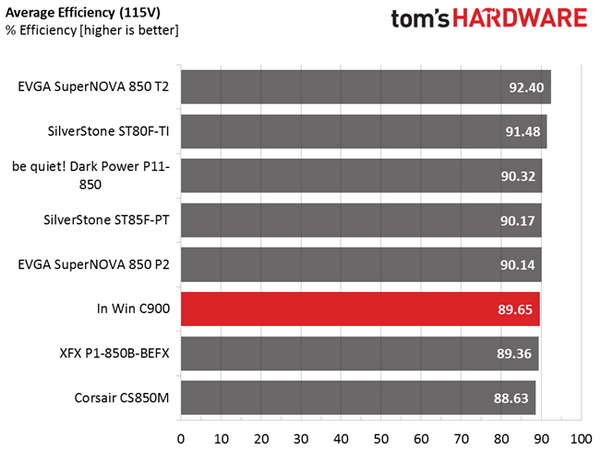In Win Classic Series C 900W PSU Review
In Win's Classic series consists of only two members featuring 750 W and 900 W capacities. The C900 is our test subject today. Besides a great finish and good looks, it promises reliable and quiet operation, along with high efficiency.
Why you can trust Tom's Hardware
Performance, Performance Per Dollar, Noise, And Efficiency Ratings
Performance Rating
The following graph shows the C900's total performance, comparing it to other units we have tested. To be more specific, In Win's unit is shown as 100 percent, and every other product's performance is shown relative to it.
The C900 doesn't even pose a threat to the more affordable 80 PLUS Gold PSUs. This platform needs a number of modifications before it can offer competitive performance.
Performance Per Dollar
The following chart may be the most interesting to many of you because it depicts the C900's performance-per-dollar score. We looked up the current price of each PSU on popular online shops and used those prices and all relative performance numbers to calculate the index. If the specific unit wasn't available in the United States, we searched for it in popular European Union shops, converting the listed price to USD (without VAT). Note that all of the numbers in the following graph are normalized by the rated power of each PSU.
Mediocre performance and a very high price tag doom the C900 to a last-place finish this metric.
Noise Rating
The graph below depicts the cooling fan's average noise over the PSU's operating range, with an ambient temperature between 28 °C and 30 °C (82 °F to 86 °F).
Only the super-efficient EVGA 850 T2 registers a lower average noise output. In Win's offering takes second place, proving that it is a good choice for enthusiasts who hate noisy components.
Efficiency Rating
The following graph shows the average efficiency of the PSU throughout its operating range, with an ambient temperature between 28 °C and 30 °C.
Get Tom's Hardware's best news and in-depth reviews, straight to your inbox.
The average efficiency score is low compared to other Platinum-rated PSUs with similar capacity, and it comes close to the levels set by more affordable 80 PLUS Gold units like XFX's.
Current page: Performance, Performance Per Dollar, Noise, And Efficiency Ratings
Prev Page Ripple Measurements Next Page Pros, Cons, And Final Verdict
Aris Mpitziopoulos is a contributing editor at Tom's Hardware, covering PSUs.



